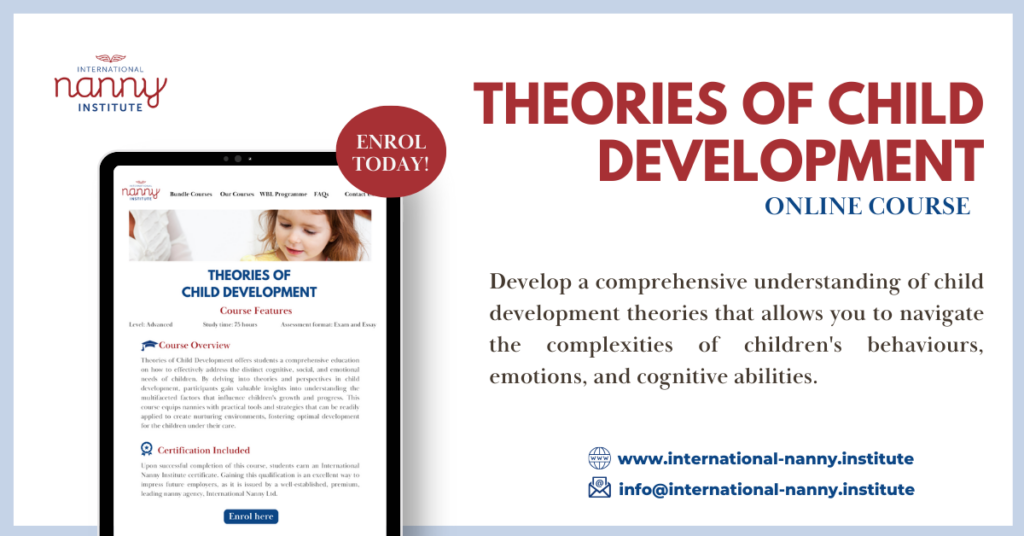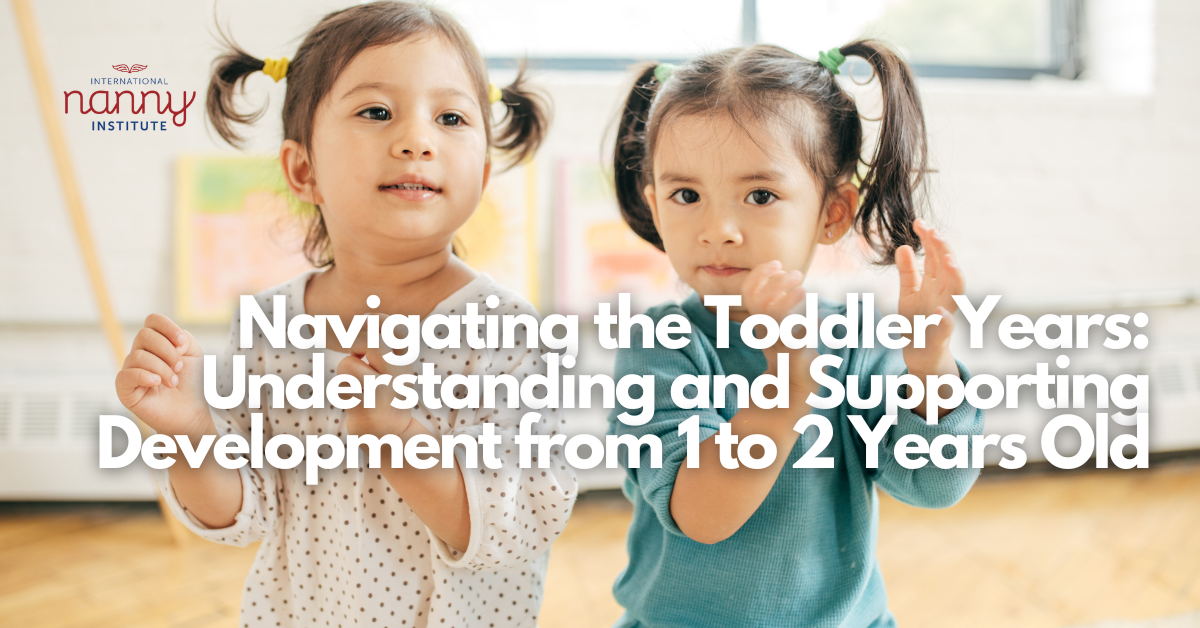Bridging Theory and Practice: Implementing Developmental Theories as a Nanny
Nannies have a unique opportunity to be on the frontlines of child development, witnessing firsthand the incredible growth and transformation that occurs in the children in your care. But beyond simply observing these milestones, you have the power to actively shape and nurture the developmental journey of the young minds entrusted to you.

The key lies in bridging the gap between the theoretical principles of child development and the practical application of those concepts in your daily interactions and caregiving practices. By seamlessly integrating developmental theories into your nanny toolkit, you can create an enriching environment that maximises the potential of every child you work with.
Let’s explore how you, as a nanny, can bring these theories to life and unlock the full spectrum of a child’s growth.
Attachment Theory in Action
At the core of social-emotional development lies the concept of attachment, as pioneered by the influential psychologist John Bowlby. By providing a consistent, responsive, and nurturing presence, you can help the children in your care develop a secure attachment – the foundation for healthy relationships, emotional regulation, and a positive sense of self.
Implement Attachment Theory by:
- Engaging in warm, affectionate interactions that build trust
- Responding sensitively to children’s cues and emotional needs
- Maintaining predictable routines and a stable, safe environment
- Encouraging open communication and the expression of feelings
When children feel safe, valued, and emotionally supported, they are empowered to explore the world around them, embrace new challenges, and develop the resilience needed to navigate life’s ups and downs.

Fostering Cognitive Growth
Drawing on the insights of theorists like Jean Piaget, you can create learning experiences that align with each child’s stage of cognitive development, nurturing their intellectual growth and problem-solving abilities.
Bring Cognitive Theories to Life by:
- Providing age-appropriate toys, puzzles, and hands-on activities
- Engaging children in open-ended questioning and discussions
- Encouraging exploration, curiosity, and independent thinking
- Offering just-the-right-amount of guidance through scaffolding
By tailoring your approach to the child’s developmental needs, you can help them build a strong foundation of cognitive skills, laying the groundwork for academic success and lifelong learning.
Promoting Holistic Well-Being
Maslow’s Hierarchy of Needs reminds us that children’s most fundamental physiological and safety needs must be met before they can fully thrive in other areas of development. As a nanny, you play a crucial role in ensuring these basic requirements are consistently satisfied.
Address Maslow’s Hierarchy by:
- Providing nutritious meals, clean water, and adequate sleep
- Maintaining a safe, comfortable, and nurturing environment
- Establishing predictable routines and clear boundaries
- Fostering a sense of belonging, love, and emotional security
When children’s basic needs are met, they are free to focus their energy on cultivating meaningful relationships, exploring their interests, and realising their full potential.

By bridging the gap between developmental theory and hands-on practice, you can create a holistic, enriching experience for the children in your care.
As a professional caregiver, your ability to seamlessly blend developmental theory and hands-on practice is the key to helping children discover their full potential. Equip yourself with the knowledge and strategies to make this crucial connection by enrolling in International Nanny Institute’s “Theories of Child Development” course. This immersive programme will teach you how to harness the power of groundbreaking theories like Attachment, Cognitive Development, and Maslow’s Hierarchy, and so much more, transforming your nanny practice into a symphony of enriching experiences that inspire growth, confidence, and lifelong success in the lives of your nanny charges. Embrace the power of these guiding principles, and watch as the children you nourish blossom into confident, resilient, and thriving individuals.









